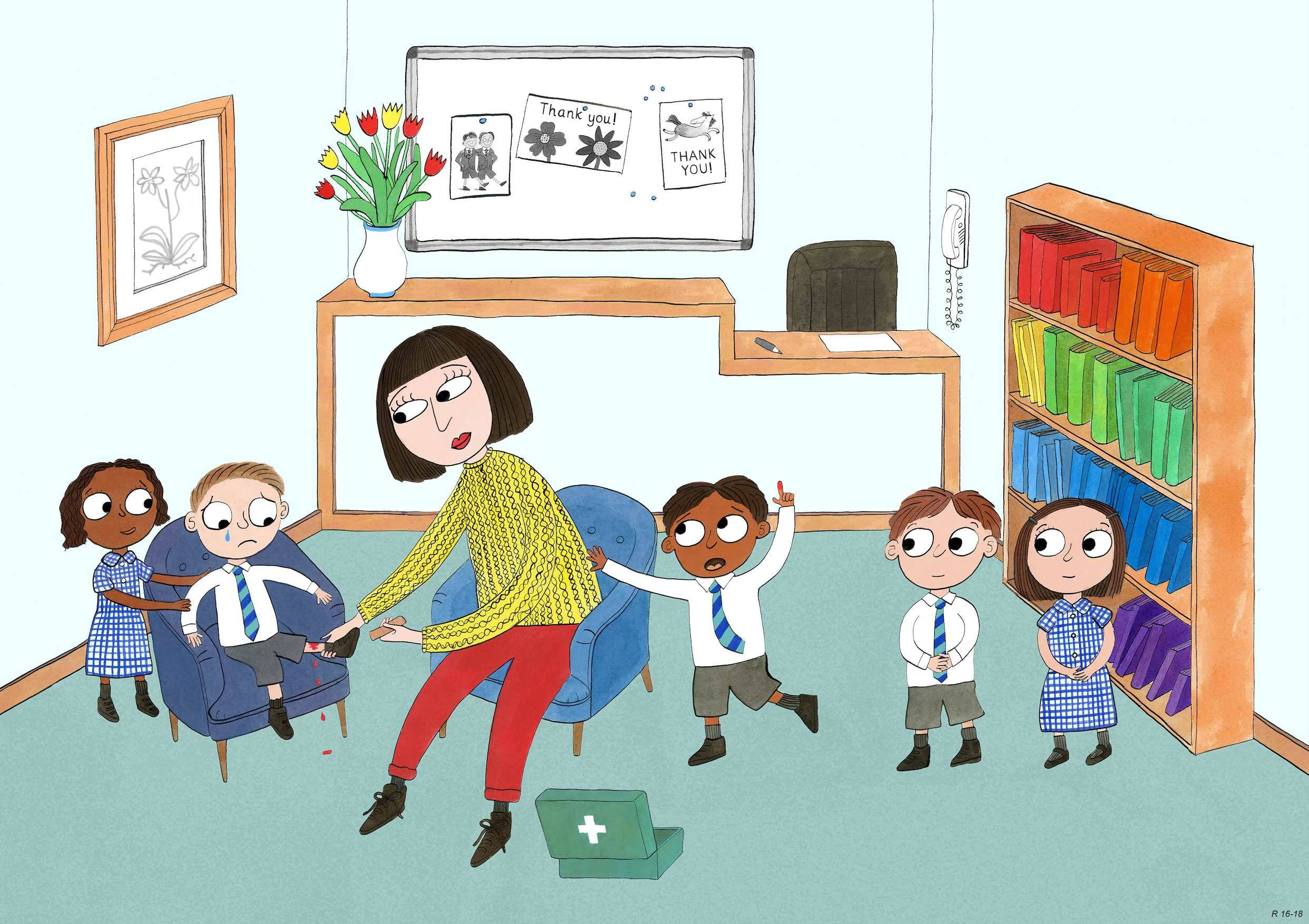Empathy and Perspective
Reception: When I think about other people's feelings I show empathy.
Core Story
This Is Our House by Michael Rosen and Bob Graham: George refuses to allow any other children into the house, even when the children tried to include him in their games. When George was away, the other children went straight into the house and would not let him back in. Only then does George have empathy for how he had made the other children feel. His new perspective leads him to change his actions and declare ‘this house is for everybody’.

Drawing out the virtue
What reasons did George give for not letting the other children play? Are these fair reasons? How did the children feel about this? Do you think George knew how the children felt?
When we try to imagine how other people feel, that’s called having empathy. Having empathy helps us to be kind to other people. So for example, when Miss XXXX had a broken arm, you noticed that she needed help to open the door. You showed empathy, which helped you to be kind. Why did the children decide not to let George in? They wanted him to know how it felt not to be allowed in. They wanted him to show empathy. How could George show empathy next time?
Activity 1: Things that make people happy and unhappy
Start from the idea that if we do not understand other people, it is hard to give them our love. It is therefore necessary to know what makes those around us happy or unhappy, to help them with our love. To do this, think of a particular person with whom we have a loving relationship (mother, father, other relative, a friend or somebody special...), and write two lists of things: one list of things that make that person happy and another list of things that make that person unhappy.
Once all pupils have written their lists, conduct a sharing activity, asking the group to discuss what things make their loved ones feel one way or another. Finally, each pupil reflects individually and will write down one or two objectives to work on to make their loved ones happier.
Activity 2: Funny pairs
See the PowerPoint R Empathy and Perspective which shows animals in odd pairings, for example a lion with a mouse and an ant with a giraffe. Ask the children if the lion would find it easy to understand the mouse and if the mouse would find it easy to understand the lion. Why/why not? The PowerPoint provides some ideas for drawing out these points eg. the lion is used to being strong and powerful and couldn’t imagine being so small and weak. The lion can roar and scare people away whereas the mouse has to learn to be quick to find a hiding place. Develop the discussion by asking children to imagine if the animals had to look after each other’s babies.
What would be hard? Would it be easy for the ant to look after a baby giraffe?
Upside Down Babies by Jeanne Willis makes this point well.
|
Classroom language
|
Sayings
|
|
I can see you are using empathy by…
How could you show your empathy here?
Use your empathy to think about the other person’s feelings.
|
Don’t judge a man until you’ve walked a mile in his shoes.
|
Library books
My World, Your World by Melanie Walsh
Upside Down Babies by Jeanne Willis and Adrian Reynolds
Me and You by Anthony Browne